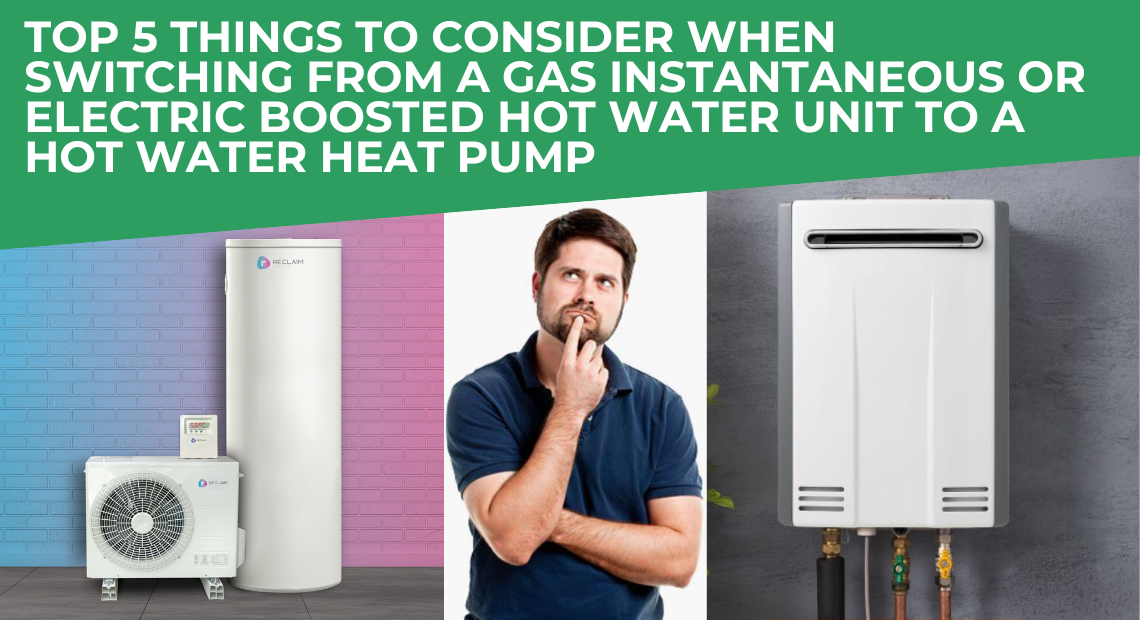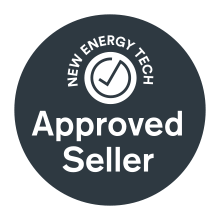Transitioning from a gas instantaneous or electric boosted hot water system to a hot water heat pump can be an excellent decision for efficiency and sustainability. Here are the top five factors to consider when making the switch:
1. Tank Size: Determine Your Hot Water Needs
The size of the hot water tank is crucial in ensuring that your household has an adequate supply of hot water. Consider the number of people in your home and their daily hot water usage habits. Larger households may require a tank with greater capacity, such as a 315L model, to meet their needs without running out of hot water during peak times.
2. Location: Optimal Positioning of Your Heat Pump
Assess the current location of your hot water unit and determine the best place for the new heat pump system. Heat pumps work more efficiently in warmer environments, so installing them in a well-ventilated area with good airflow is beneficial. Also, consider the proximity to your bathrooms and kitchen to minimize heat loss through long piping runs.
3. Understanding Heat Pump Components
Familiarize yourself with how a heat pump operates and the key components involved, such as the compressor, evaporator, and condenser. Unlike traditional systems that rely on heating elements or combustion, heat pumps use ambient air to heat water efficiently. Understanding these components helps you make informed decisions about installation, maintenance, and potential upgrades.
4. Pressure and Temperature: Compliance and Expectations
Be aware of the pressure and temperature standards for your new system. In 1998, Australia mandated the use of tempering valves to limit the maximum temperature of hot water delivered to taps to 50°C, reducing the risk of scalding. Ensure your system includes a pressure-limiting valve to maintain water pressure levels compatible with your household plumbing. Remember that the further your bathroom is from the hot water unit (over 15 meters), the more noticeable the pressure drop may be.
5. Maintenance: Ensuring Longevity and Efficiency
Regular maintenance is essential to keep your heat pump system running smoothly and efficiently. Check the manufacturer’s guidelines for routine maintenance tasks, such as cleaning filters and inspecting components for wear and tear. Proper maintenance ensures optimal performance and prolongs the lifespan of your system.
Mixed Water Delivery with Hot Water Heat Pumps
When considering a heat pump like the Reclaim 315L, it’s essential to understand mixed water delivery. This refers to the total amount of usable hot water produced by mixing stored hot water with cold water. A heat pump heats water to around 60°C, which is then mixed with cold water to achieve a safe delivery temperature of 50°C at the tap.
Example Calculation – Using the Reclaim 315L heat pump as an example:
- Stored Water Temperature: 60°C
- Cold Water Temperature: 15°C
- Mixed Water Temperature: 50°C

Using these assumptions:
Storage tank size: 315l, Stored hot water temp = 60 degrees minus cold water temp of 15 degrees = 45 degrees. Then Temped water to house for showers at 50 degrees minus cold water temp of 15 degrees = 35 degrees. Then 45 degrees divided by 35 = 1.2857 x Storage tank size of 315l = 405l of mixed water.
Thus, the Reclaim 315L heat pump can deliver approximately 405 litres of mixed water at 50°C, providing enough hot water for several showers before needing to heat more water.
Factors Affecting Mixed Water Delivery:
- Incoming Cold-Water Temperature: Varies by season and affects the volume of mixed water.
- Actual Usage Temperature: User preferences for hotter or cooler water can change effective volumes.
- System Efficiency: Efficiency and recovery rates impact how quickly the system can replenish hot water.
Average Water Usage for Showers
In Australia, the average water usage per person for showers depends on shower duration and the flow rate of the showerhead:
Duration: Average shower lasts 7 to 8 minutes.
Flow Rates:
- Standard Showerhead (15 L/min): ~120 litres per shower
- Water-Efficient Showerhead (9 L/min): ~72 litres per shower
Example Calculation: For a household with water-efficient showerheads:
- A 315L tank delivers 405L of mixed water.
- Each 8-minute shower uses 72 litres.
- This allows for approximately 5.6 showers before the tank is depleted.
If the heat pump’s boost function increases the water temperature to 70°C, you gain approximately 89 additional litres of mixed water, allowing for an extra 1.2 showers.
Conclusion
Switching to a hot water heat pump offers energy efficiency and environmental benefits. Understanding these key considerations will help ensure a smooth transition and optimal performance of your new system. For more information on water conservation and efficient usage, consult the Australian Bureau of Statistics and the Australian Government’s Your Home Guide.












